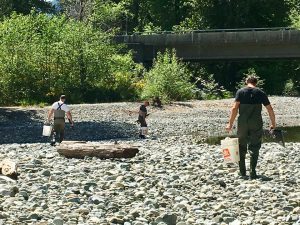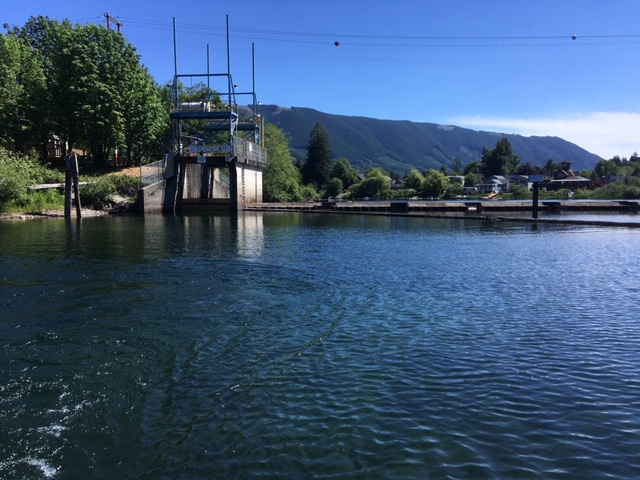The drought of 2019 was the worst one ever seen in the Cowichan Valley, despite previous summers posting hotter, dryer numbers.
The water licence at the Cowichan Weir states that there have to be seven cubic meters of water per second flowing through, but earlier this week the capacity increased from four and a half to five and a half cubic metres per second.

Stranded fish fry and eggs were major concerns during the summer, but Brian Houle, the Manager of Environment with Catalyst Paper said all signs point to chinook salmon returning to spawning grounds in good numbers.
“The people who are stewarding the fish are asking me, ‘when are we going to get this flow up?'” said Houle. “The fish are the ones that need the flow up, but they have almost one thousand salmon through the counting fence already. We certainly hope to see 20,000+ fish.
Houle said, “The fish are able to get up the river at these lower flows and now we’ve increased it one cms (cubic metre per second).”
It took three weeks of pumping water from Lake Cowichan to the Cowichan River and a week’s worth of rain, but Catalyst Paper, which operates the Cowichan Weir is increasing flow rates from four and a half to five cubic metres a second.
While this is the worst drought season ever in the Cowichan Valley, the reason was a snowpack half its normal size, not the hot temperatures and dry conditions.
Houle said pumping water from the lake to the river hasn’t had a negative impact on the health of the watershed.
“From a bad year, with the pumps, we’ve definitely kept the river from being impacted, by using the pumps we have not impacted the lake significantly,” said Houle.
He said 2016 and 2019 were horrible drought seasons in the Cowichan Valley, but what made this year worse was a snowpack that was half what is considered normal.
Interestingly, the rain earlier in September successfully replaced the equivalent of the missing snowpack.
In 2016, the snowpack was double the normal averages and the lake level didn’t go down like it did this year.






